Reducing churn, extending customer lifetime value, and making customers open to upsells and add-ons are three essential components of customer success.
One of the best ways to check each of these three boxes is by increasing product stickiness.
Here’s everything you need to know.
What Is Product Stickiness?
Product stickiness involves retaining customers by getting them to return to your product and consistently engaging because of the value they get from using it.
It’s an important metric because a solid user stickiness rate indicates a positive customer experience, strong product engagement, and customer loyalty.
As Gainsight puts it, “A sticky product strengthens the relationship with a customer over time, encouraging engagement with additional products throughout the customer lifecycle. When customers place a high value on your product, they will engage with it often as part of their daily workflows, making them much more likely to find value and renew their subscription.”
And as we just said, this is vital to maximizing customer lifetime value and opening the door for additional sales opportunities with existing customers.
Beyond that, having a sticky product plays a significant role in customer loyalty and can set the stage for establishing brand advocates who will willingly (and happily) share your product with others.
If you’re developing a customer loyalty program, striving to increase product stickiness should be a core part of it.
So when you look at the big picture, product stickiness can lead to increased product adoption, heavier feature usage, repeat purchases, further customer acquisition, and in some cases, it can raise your Net Promoter Score.
What Is an Example of Product Stickiness?
There’s no lack of design platforms available these days. But one of the world’s top brands is Canva, which offers users a free-to-use online graphic design tool with plenty of premium paid feature upgrade options.
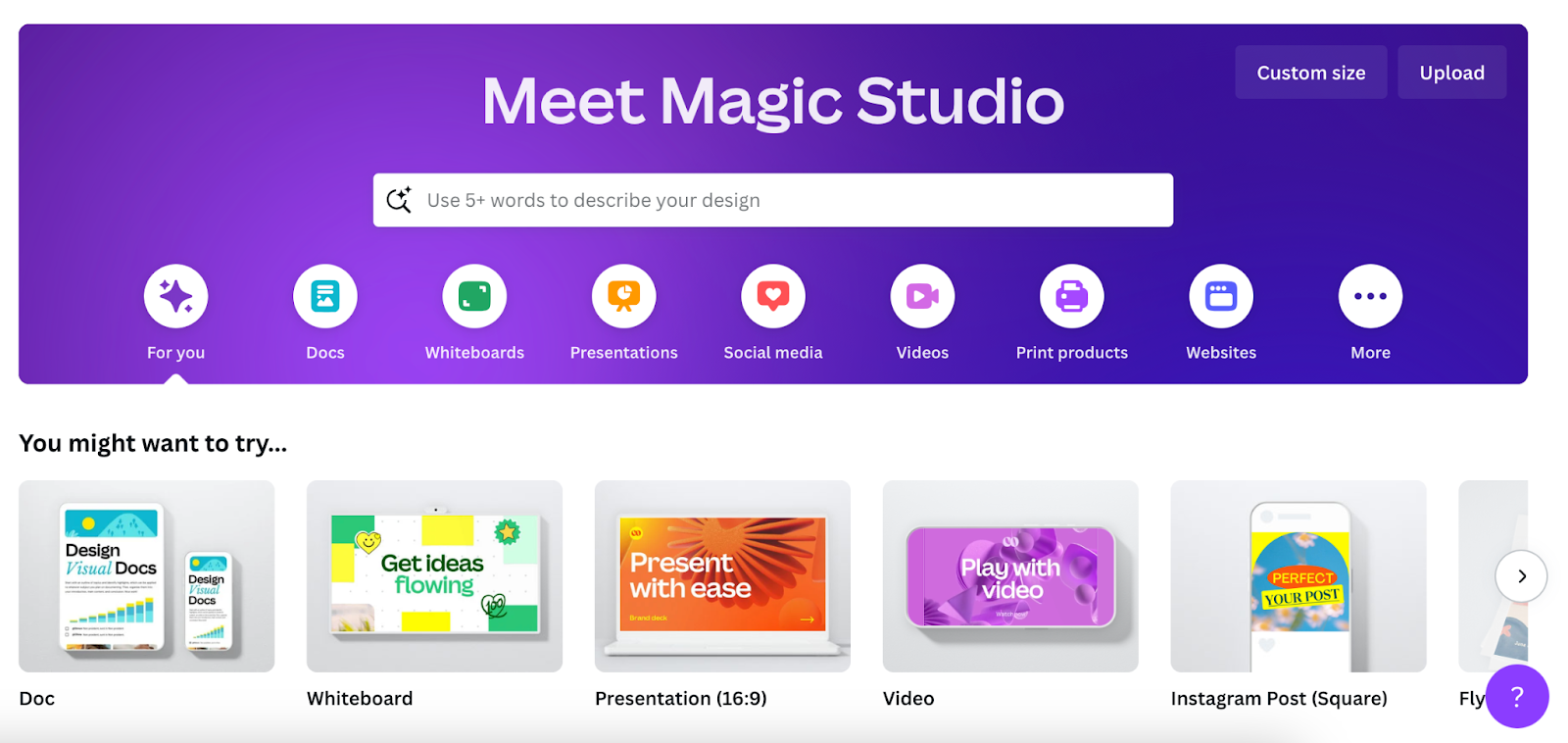
Source: Canva
With Canva, users can create their own presentations, videos, social media posts, resumes, and much more.
The easy-to-use interface, constant upgrades and improvements, personalization, built-in educational tools, and strong community are just some of the reasons why Canva is so popular.
As a result, this is a brand that’s been able to build deep customer loyalty, retaining a large portion of its active user base, and seamlessly offering upsells and add-ons to help customers unlock more value while boosting profits.
For instance, if someone is already using Canva’s Magic Studio, which features cutting-edge AI tools to create jaw-dropping art, Canva promotes “Magic Animate” which makes images move.
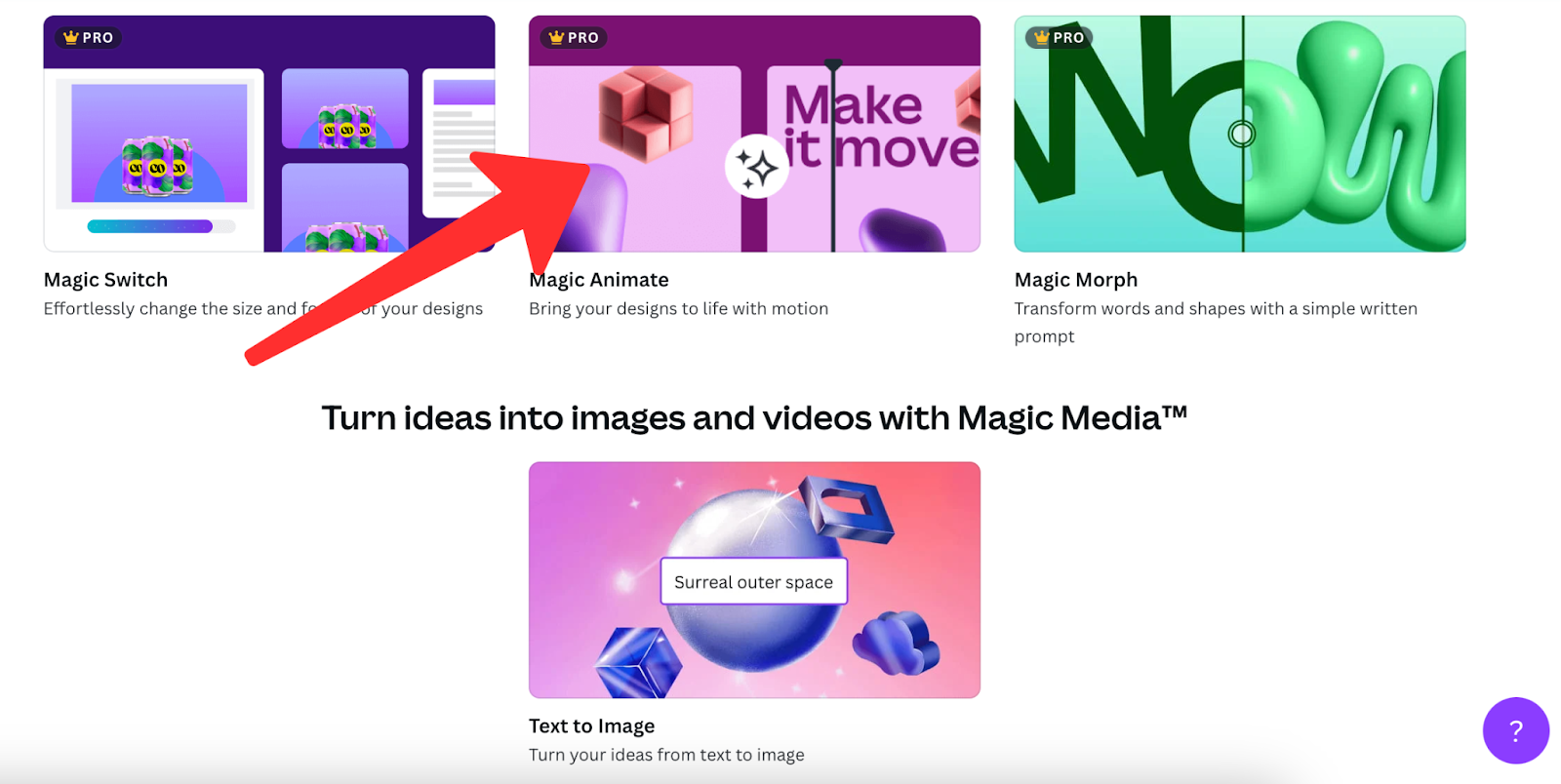
Source: Canva
And considering how Canva’s user base has exploded over the past decade…
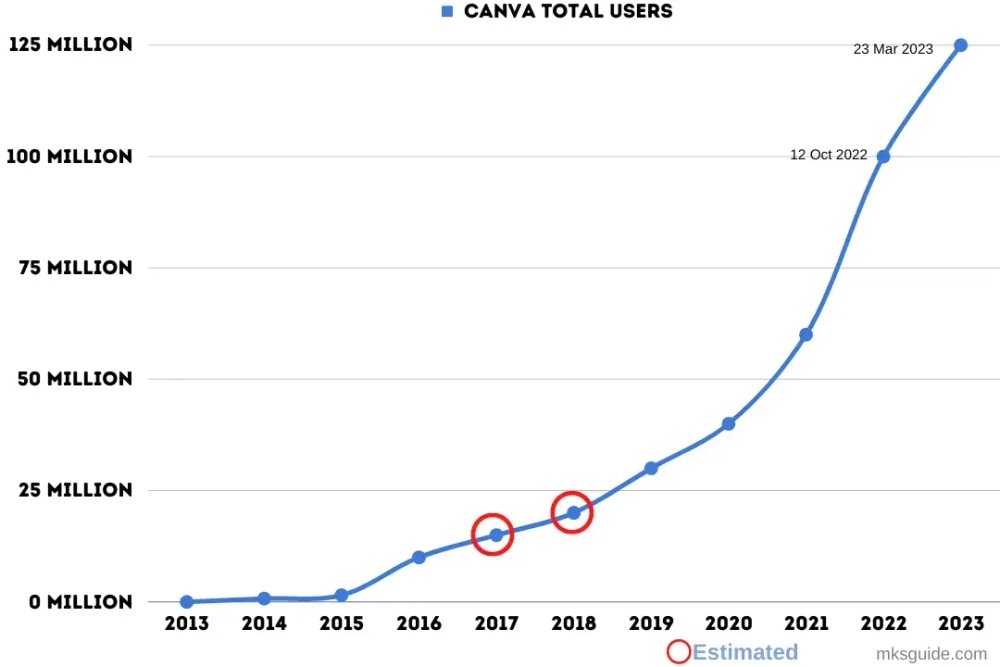
Source: Canva
…along with their growing revenue, it’s clear that product stickiness is definitely something they’ve achieved.
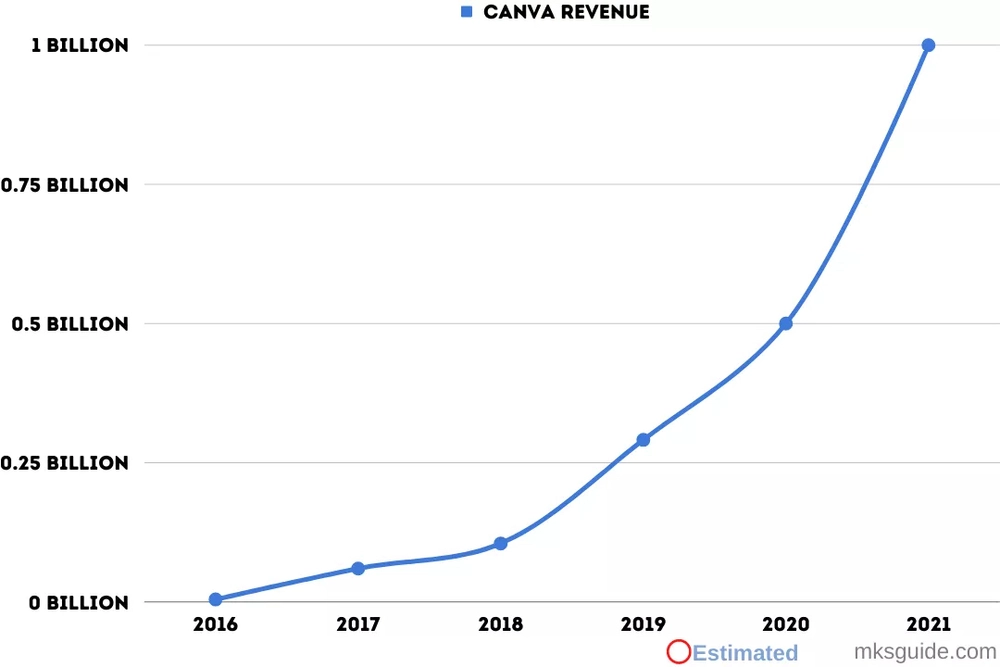
Source: Canva
What Is The Average Product Stickiness?
Product stickiness can vary considerably from brand to brand in the SaaS industry.
But when you zoom out and look at averages, 13% is the usual rate across the board.
If you reach a 13% stickiness rate with your SaaS product, you’re where you should be.
Note, however, that a stickiness rate of 20% is considered good, while a product stickiness ratio of 25% or higher is considered very good.
What Is The Difference Between Product Stickiness and Retention?
There’s definitely some overlap between product stickiness and retention because, after all, having a sticky product tends to increase customer retention.
But there is a key difference.
Product stickiness refers to a product’s ability to keep users actively engaged and returning to your product time and time again.
On the other hand, user retention specifically refers to a business’s ability to keep existing customers over a period of time.
In other words, stickiness ratio relates to organic interest in your product, while customer retention relates more to keeping customers and preventing them from switching to competitors.
What Is The Difference Between Churn and Stickiness?
Churn is the rate at which customers stop using your product, with many eventually moving on to a competitor.
Stickiness is the opposite of churn and involves keeping users satisfied with your product and actively engaged so that they continue using it and coming back for more.
A high customer churn rate is toxic to a company’s success, while product stickiness is highly advantageous.
That’s why increasing customer stickiness should be a top priority for today’s companies.
How to Measure Product Stickiness
The formula for calculating product stickiness is pretty straightforward.
You simply take your number of daily active users (DAUs) and divide it by your number of monthly active users (MAUs).
From there, you multiply that number by 100. And that is your product stickiness.
Note that weekly active users WAUs is also an important metric you’ll likely want to measure. But in the case of product stickiness, DAUs and MAUs are all you need to focus on.
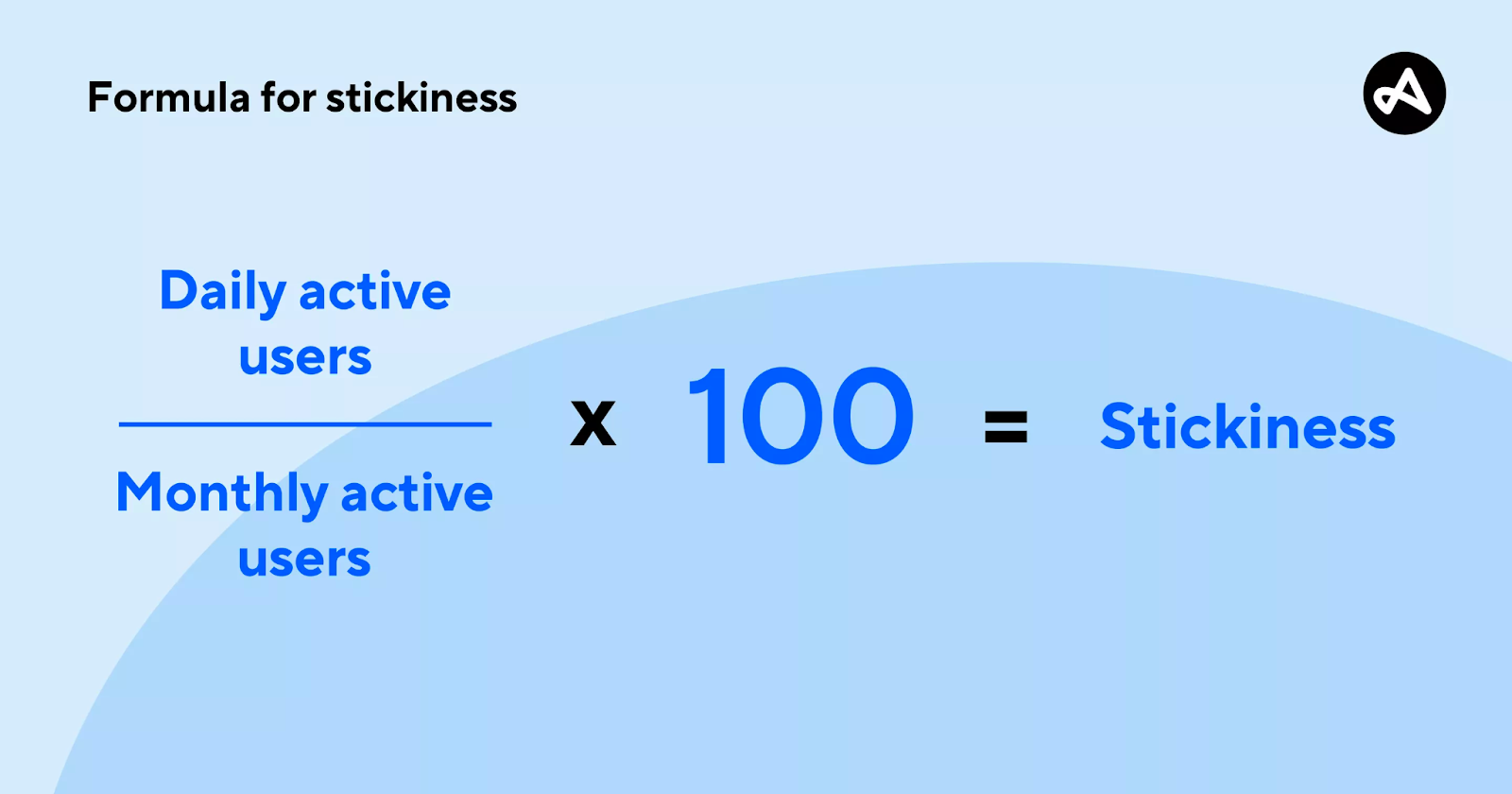
Source: Adjust
Say, for example, you had 1,500 daily active users and 10,000 monthly active users.
Your formula would look like this.
1,500 / 10,000 = 0.15
Then you would multiply 0.15 x 100, which would equal 15%, which would mean your product stickiness would be 15%, putting it just above the average of 13%.
Once you’ve calculated this number, it should give your product manager at least a baseline reading of whether A) your product needs to be improved or B) it currently has a satisfactory stickiness rate.
In our example, the 15% product stickiness rate would be adequate by most standards, given that 13% is the SaaS average.
However, if it was considerably lower at 7%, for instance, that would indicate that improvements would likely need to be made.
How to Increase Product Stickiness
At this point, we know what product stickiness is, why it’s important, and how to calculate it.
But how do you go about increasing it?
Here are four specific strategies that should help your product team maximize app stickiness.
1. Master Your Onboarding Flow
It’s hard to stress enough the importance of effective new user onboarding for customer success. And this is certainly the case for product stickiness.
For perspective, “63% of customers say that onboarding — the level of support they’re likely to receive post-sale — is an important consideration in whether they make the decision in the first place.”
Further, “Over 90% of customers feel that the companies they buy from ‘could do better’ when it comes to onboarding new users.”
To set the stage for quality user engagement and truly get the most value from your product, you need to master your onboarding flow.
While this can look a little different from company to company, here’s an example of what a typical customer onboarding process may look like.
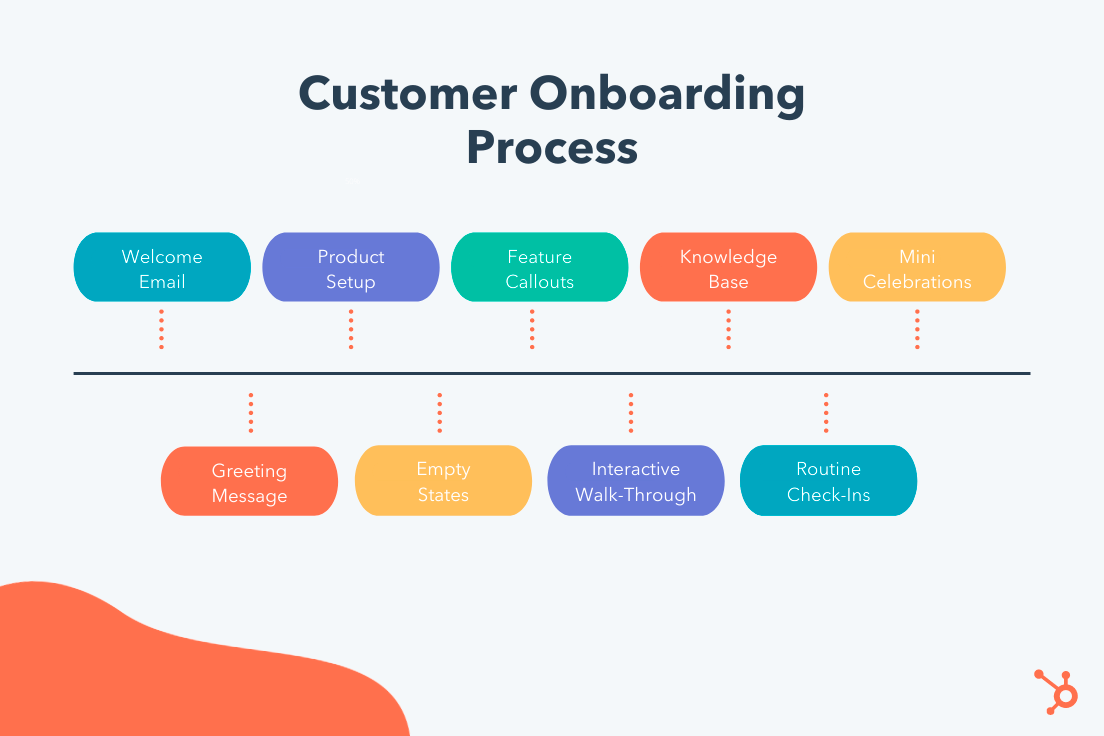
Source: Segment
Having a systematic process like this in place should ensure there’s a uniform experience among customers. And if there are friction points in your onboarding flow, you’ll be better able to identify them and make the necessary adjustments.
2. Make the Product Engaging
Engagement is the lifeblood of customer stickiness.
As we said earlier, a critical part of making a product sticky is getting your customers to consistently engage with it and return over and over again.
Here are some ways to do that.
- Start with a user-friendly interface that allows customers to use your product smoothly and seamlessly
- Strive to create an aesthetically pleasing product, as visual appeal is an integral part of making a product enjoyable to use
- Focus heavily on personalization, such as recommending certain features based on user behavior
- Provide free educational content on how users can get the most out of your product
- Build a digital community where users can share stories, exchange information, and ask questions
- Make periodic updates to continually improve your product so users want to stick around to see what’s next
Besides that, many of the stickiest products use automatic triggers to send users personalized content.
Take this example from Canva where a user checked out Facebook templates on the platform. After doing so, the user received this email featuring the top 10 trending Facebook post templates to liven up their newsfeed.
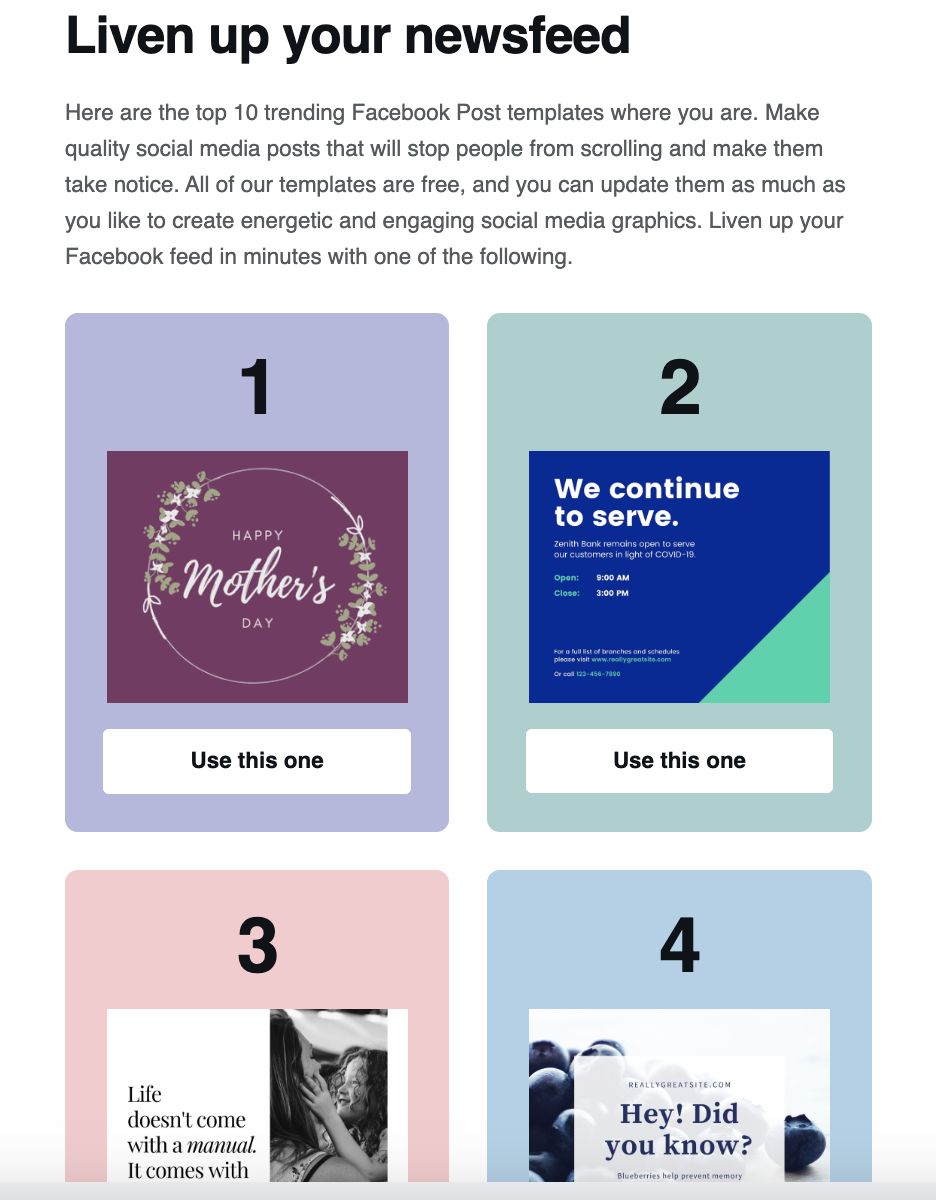
Source: Canva
3. Gamify and Reward Product Usage
Gamification — a system that uses rewards like points, achievements, and badges or challenges — can have a profound impact on product stickiness and offers three main benefits.
First, studies have found that it can increase information retention by as much as 40%, which makes it easier for customers to learn how to use your product and each feature.
Second, it makes the process more engaging, with research reporting a 48% engagement increase with gamification.
And third, it makes learning a product more fun as a whole.
By taking tasks that may normally be monotonous and gamifying them, they instantly become more enjoyable, which can go a long way in retaining more customers and motivating them to use your product on a more consistent basis.
A good example of a company that uses gamification to their advantage is Grammarly where they send out personalized emails showcasing recent user achievements and how they compare to other Grammarly user achievements.
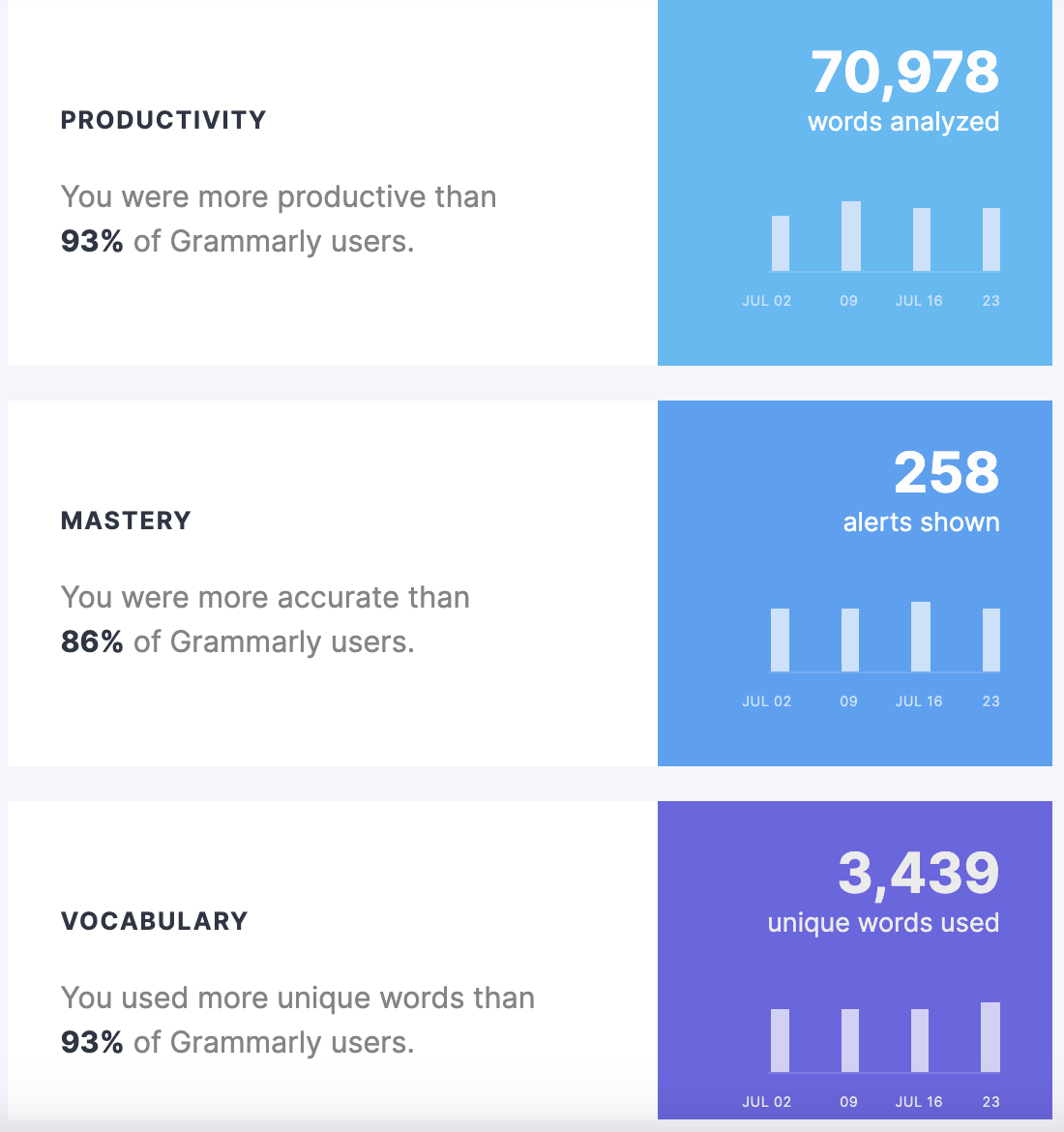
Source: Grammarly
By seeing these positive accomplishments, users are more likely to keep returning to Grammarly because of the success they’ve experienced.
4. Ask for Product Feedback
Finally, you can always use the old-fashioned but highly effective strategy of asking actual users for product feedback.
You can speculate all you want on why someone does or doesn’t like your product or what features they like best.
But hearing it straight from the horse’s mouth will almost always produce the valuable insights you need to improve your product and, as a result, increase customer stickiness.
This could be something as simple as asking a user to rate how likely they are to recommend your product to a friend or colleague like Drift did.
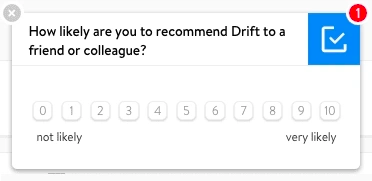
Source: HubSpot
You could go more in-depth and see if a user encountered any particular issues that were detrimental to their experience like Skype did in this survey.
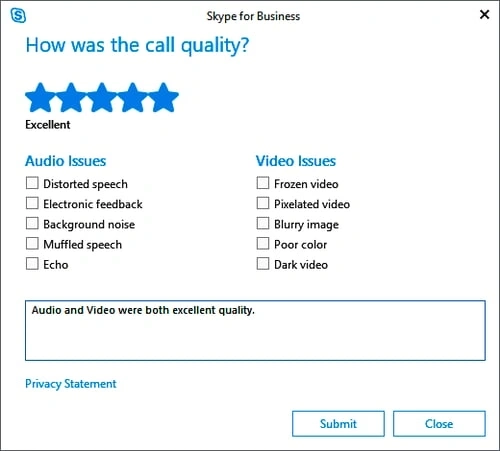
Source: HubSpot
The key to implementing these types of customer feedback surveys effectively is asking users at the right time — ideally just after they’ve been using your product and still it’s fresh on their minds.
Or, you always could conduct a quarterly business review with a key client-side stakeholder to get their direct product feedback.
This is a much more intensive strategy that should help you unearth detailed insights that go well beyond basic surveys.
Use Woopra to Measure and Automate Product Performance
So far, we mentioned a few ways to generate data to quantify product stickiness ratio, such as dividing daily active users by monthly active users and getting product feedback.
But to really understand your product stickiness ratio and see the big picture, it’s helpful to use product analytics like Woopra.
With Woopra, you can generate end-to-end insights at every stage of the customer journey — from new customer onboarding to customer engagement to feature adoption to retention rate and beyond.
For example, Woopra lets you see what percentage of users return after using core product features.

It lets you see exactly what your customer retention rate is over a particular period of time.
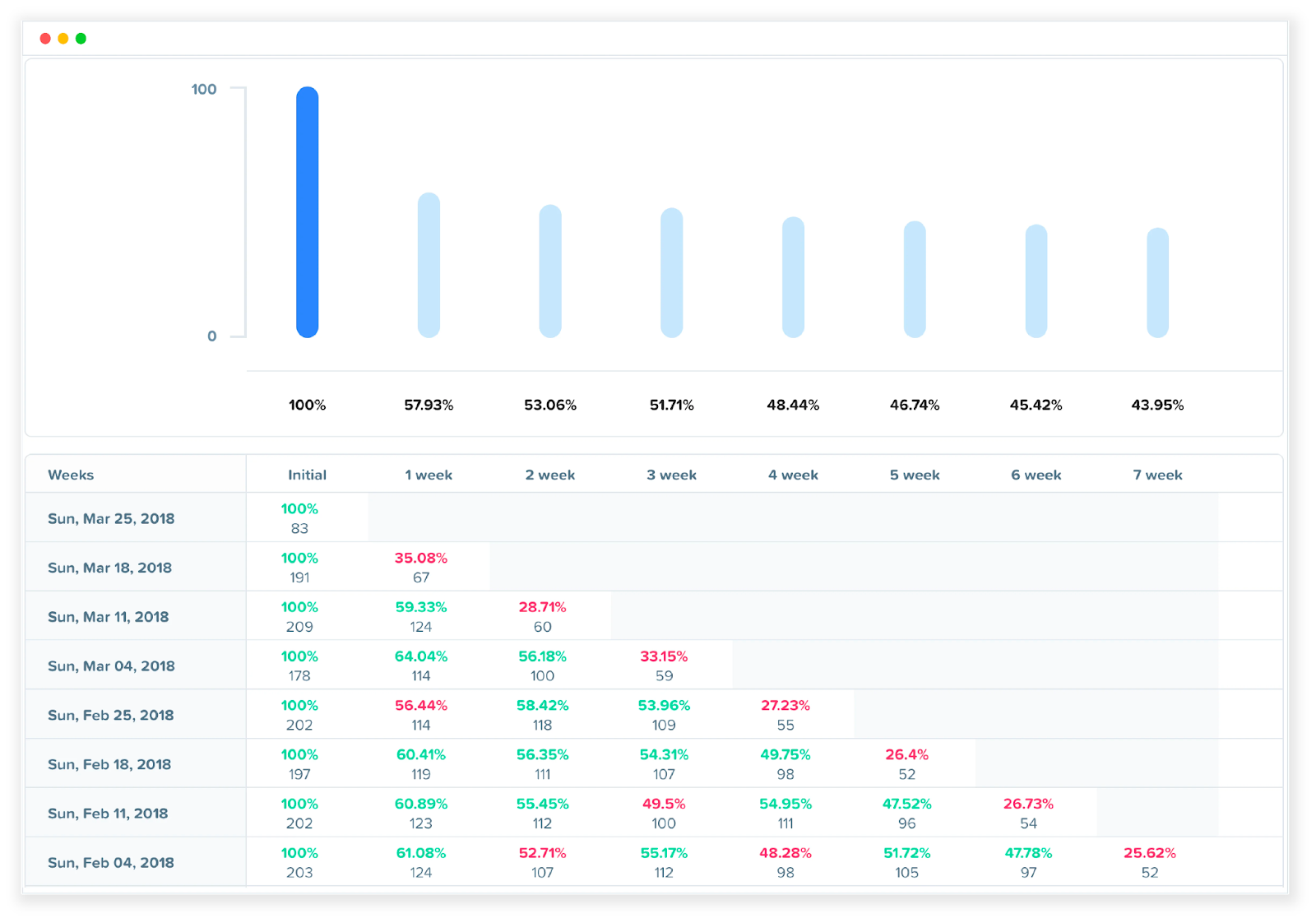
You can see how many users engage with new product releases.

And much more.
There’s even customer churn analysis so you can thoroughly analyze churn among unique users. And if it’s higher than what it should be, this can help you identify specific areas for improvement.
The more data you gather with analytics like this, the more data-driven your decision-making will become.
Besides that, you can use Woopra to automate product performance-related tasks, such as prioritizing customer support tickets…
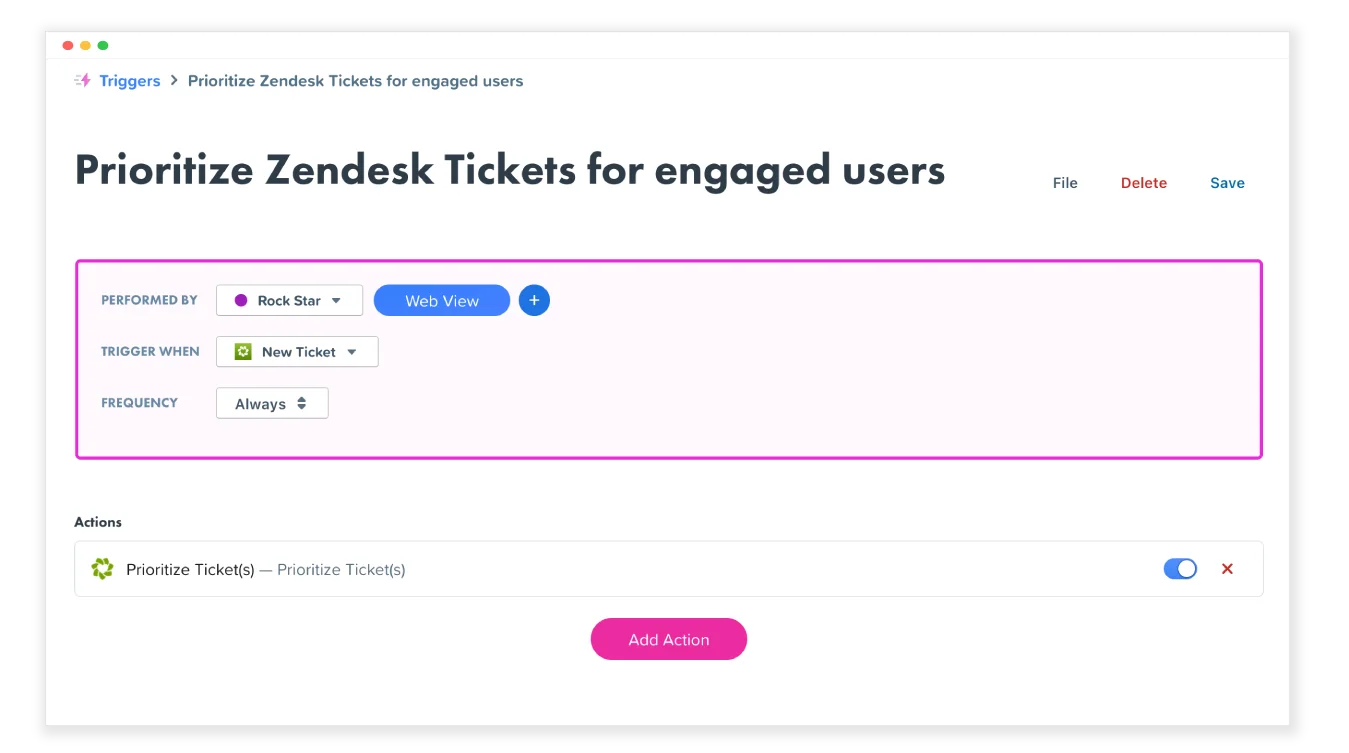
…and sending bulk emails to VIP users who are at risk of churning.
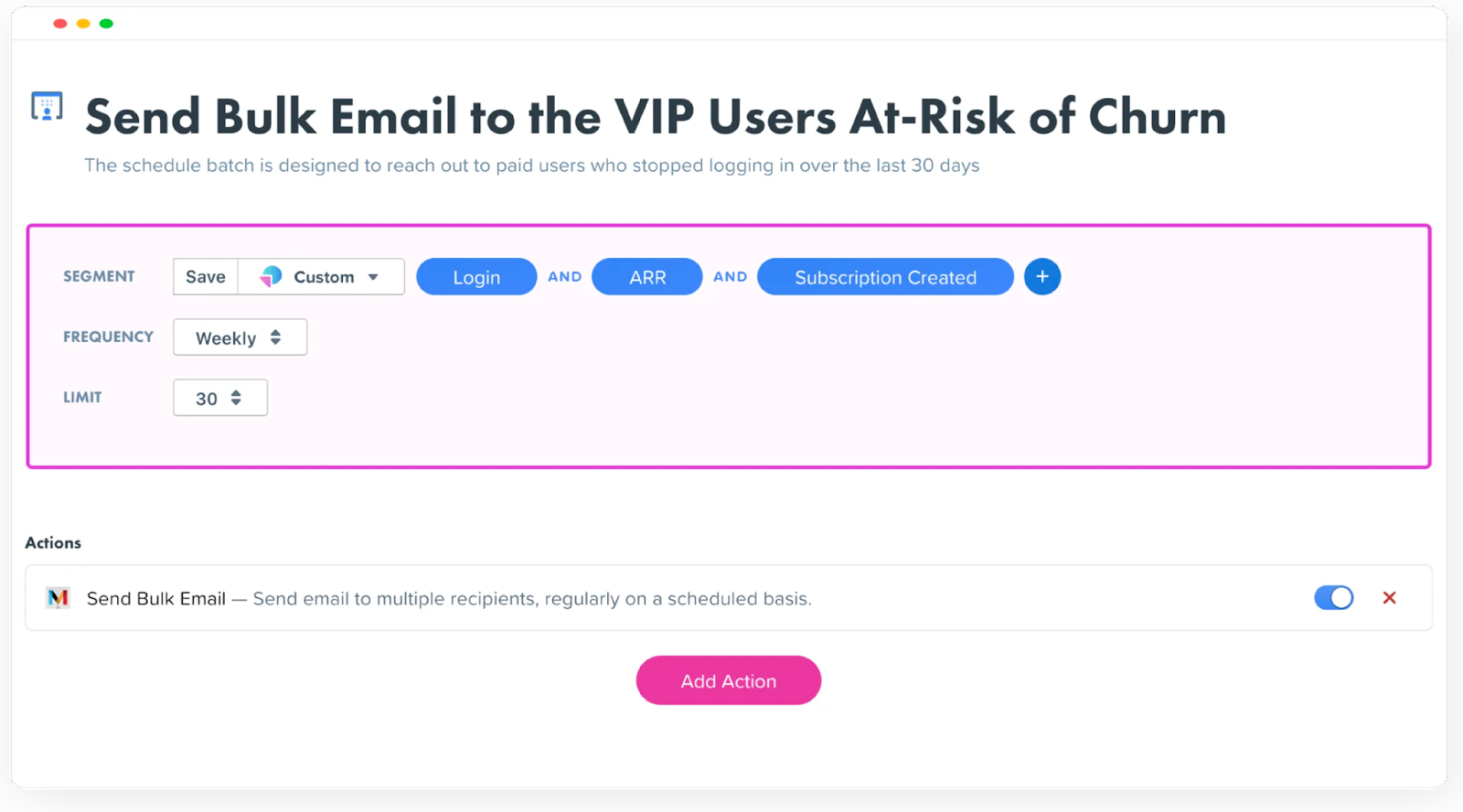
When it comes to customers that you want to retain at all costs, you could have a customer service rep reach out to them personally to increase your chances of keeping them on board.
Put this all together, and you’re more likely to see greater customer success, more customer stickiness, and an overall higher customer health score.



